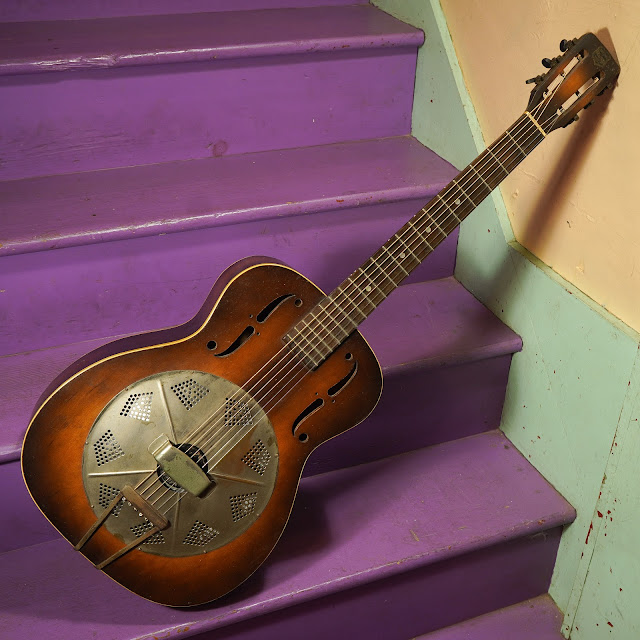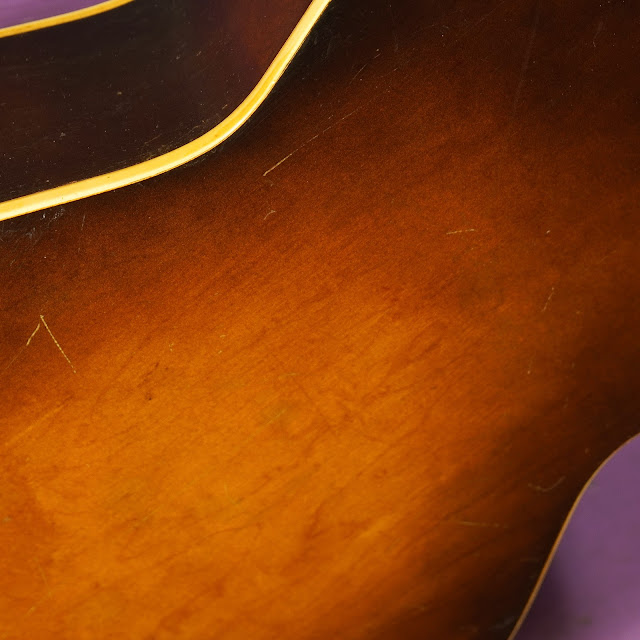1930s National Trojan Woodbody Resonator Guitar
This is a customer's fun old Trojan. These Nationals had their bodies and necks made by Harmony (which is why it has the usual 25 1/8" Harmony scale length) but their cones, biscuits, and coverplates are pure National fare. I find the build quality can be hit or miss in how they hold-up depending on how hard they've been abused by time, but when you get a good one (like this one), it's pretty surprising how good they can sound. This particular Trojan practically roars when hit with a pick.
Work was the usual stuff for one of these, though of course the ebonized fretboard (which gets sort-of "mealy" over time) proved mildly-frustrating while resetting the neck and getting the frets in order. Post-work it's playing spot-on and is ready to roll.
Repairs included: a neck reset, fret seating and level/dress, cleaning, side dots, bridge modification (made adjustable saddle), setup, etc...
Weight: 5 lbs 10 oz
Scale length: 25 1/8"
Nut width: 1 11/16"
Neck shape: medium-bigger V
Board radius: flat
Body width: 14 1/4"
Body depth: 4 1/8"
Body: ply birch
Cone type: single cone
Bridge: maple biscuit w/adjustable rosewood bridge
Fretboard: ebonized maple
Neck wood: poplar
Action height at 12th fret: 3/32” bass 1/16” treble (fast, spot-on)
String gauges: 54w, 40w, 30w, 22w, 16, 12
Truss rod: non-adjustable
Neck relief: straight
Fret style: medium-low
Condition notes: the guitar itself is somewhat dirty and worn in the finish but overall it's come through time decently. It's completely original save a modified saddle of my own improvisation and some side dots which I added.





















Comments